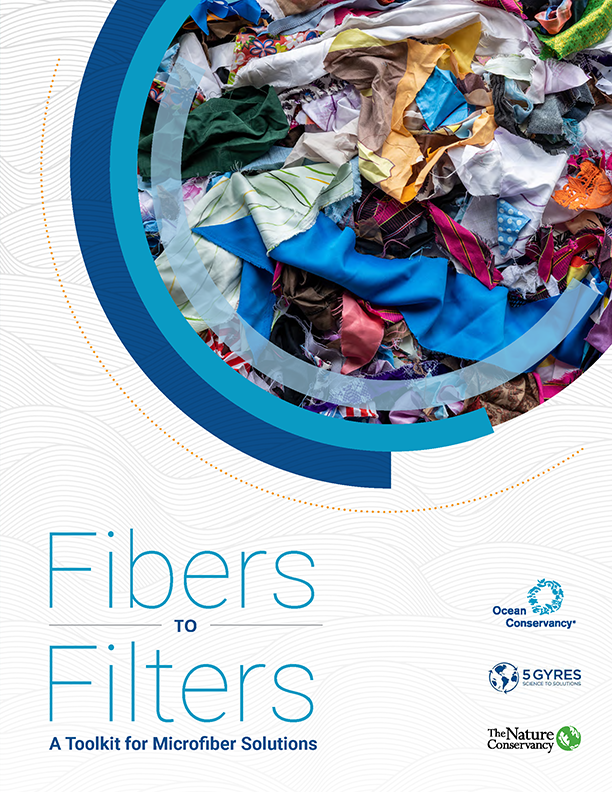Fibers to Filters
A guide to readily accessible solutions to tackle a major source of microplastic pollution
 Microplastics are a crisis for our health and the ocean, and once in the environment, they are nearly impossible to clean up. That’s why finding ways to prevent microplastic pollution from happening in the first place is so critical. Research has shown that washing clothes is one of the biggest sources of microplastic pollution, but the good news is, there are existing technologies that can help capture them and prevent microplastic pollution. Coauthored by Ocean Conservancy, The 5 Gyres Institute and The Nature Conservancy, Fibers to Filters: A Toolkit for Microfiber Solutions shows how adding microfiber filtration to washing machines can play a significant role in addressing microplastic pollution.
Microplastics are a crisis for our health and the ocean, and once in the environment, they are nearly impossible to clean up. That’s why finding ways to prevent microplastic pollution from happening in the first place is so critical. Research has shown that washing clothes is one of the biggest sources of microplastic pollution, but the good news is, there are existing technologies that can help capture them and prevent microplastic pollution. Coauthored by Ocean Conservancy, The 5 Gyres Institute and The Nature Conservancy, Fibers to Filters: A Toolkit for Microfiber Solutions shows how adding microfiber filtration to washing machines can play a significant role in addressing microplastic pollution.
Scientists have found microplastic pollution nearly everywhere they’ve looked—from the deepest part of our ocean to the tops of remote mountain ranges, and even inside our own bodies. Microfibers, small thread-like materials less than 5mm in length, are among the most ubiquitous forms of microplastics in the environment. In a 2023 study by Ocean Conservancy scientists, microfibers were the most common form of microplastic identified in a variety of proteins that are part of our diets.
Our clothing and other textiles we use every day (such as carpets or towels) are increasingly made from plastic and have become a major source of microfibers in the environment. Plastic-based fabrics like polyester and nylon shed microfibers throughout their production, use and care. Every time we wash clothes made from these materials, they shed microplastics in the form of microfibers that are then released into our ocean, waterways and land.
While they may be small, microfibers are a massive problem for our ocean:
- 5.6 million metric tons of synthetic microfibers were emitted from washing clothes between 1950 and 2016—that’s equivalent to 28.2 billion T-shirts entering the environment! Not to mention, 50% are from the last 10 years alone.
- A single load of laundry can release up to 18 million microfibers.
These microplastics require targeted and urgent action for the health of our communities, ocean and planet. While addressing microfiber pollution requires interventions across the lifecycle of clothing and other textiles, adding microfiber filtration to washing machines can significantly reduce microfiber pollution.
The Fibers to Filters Toolkit outlines the role of washing machines in releasing microfiber pollution, their potential to be a solution, existing microfiber filtration technologies, cost estimates and examples of state and local policies that showcase the power of policy to drive technological adoption and set precedents.